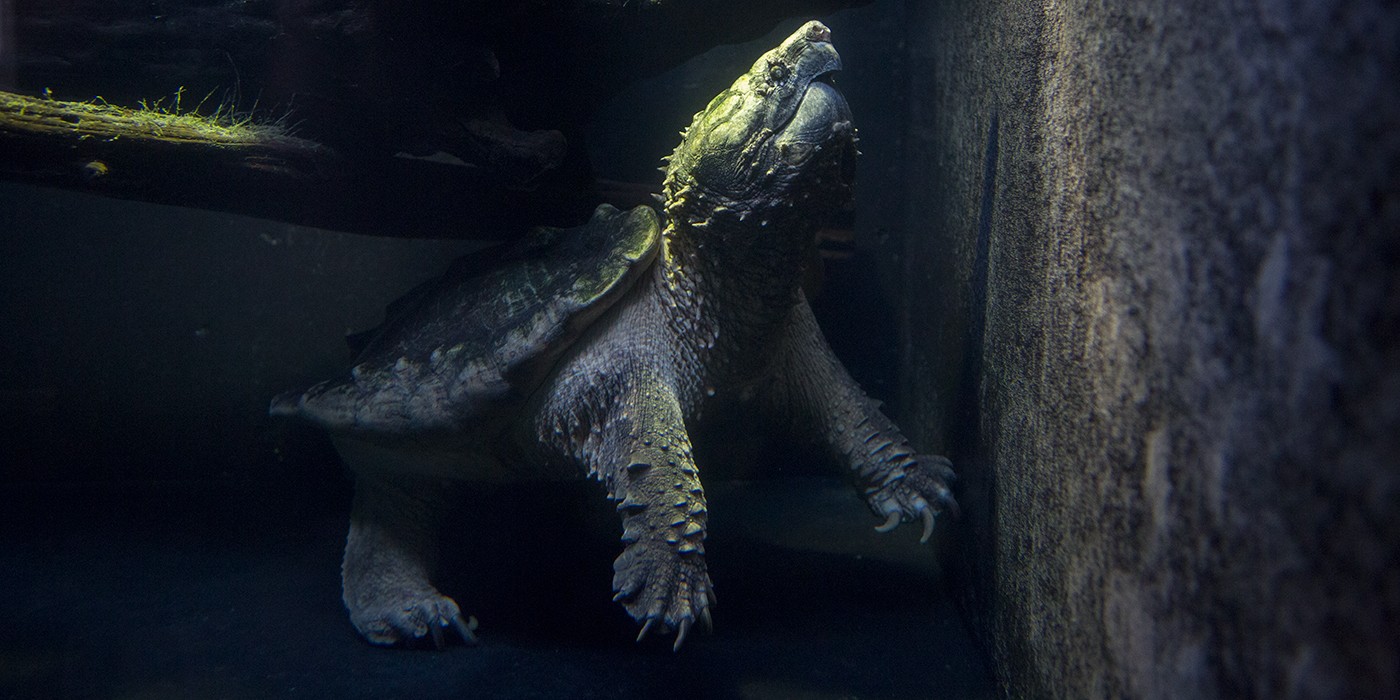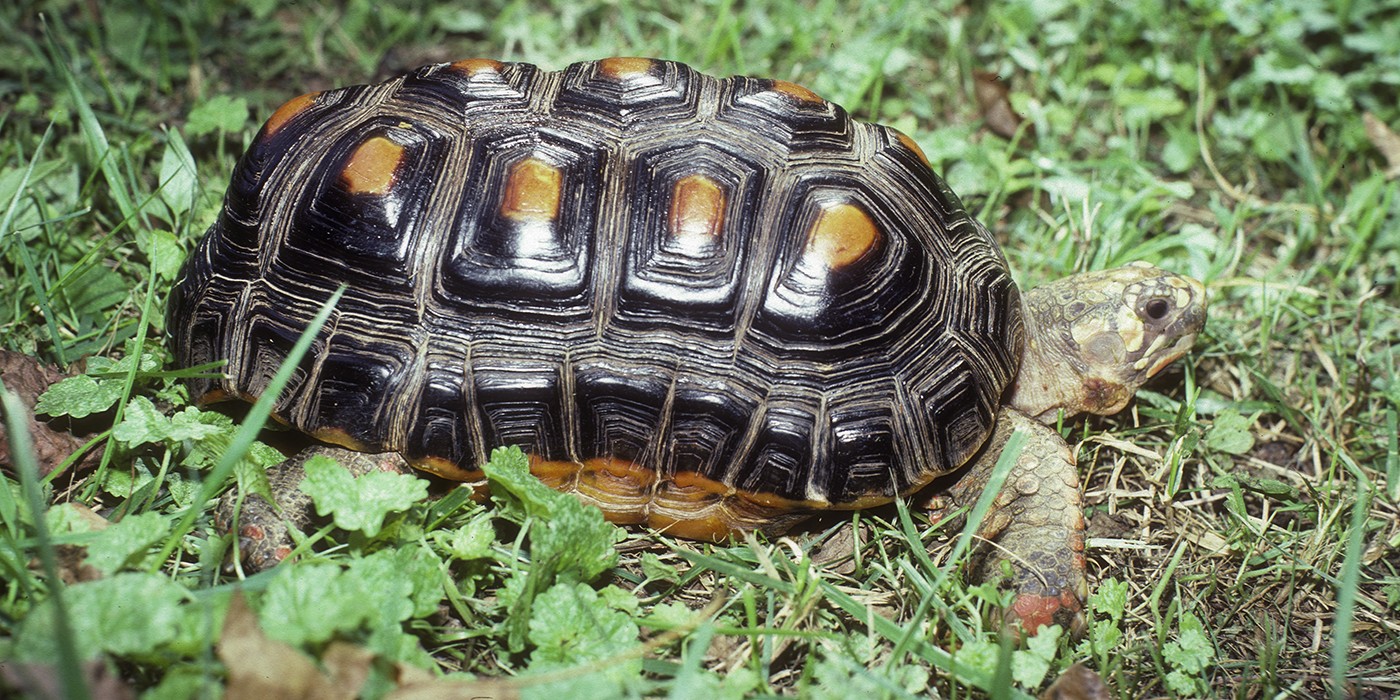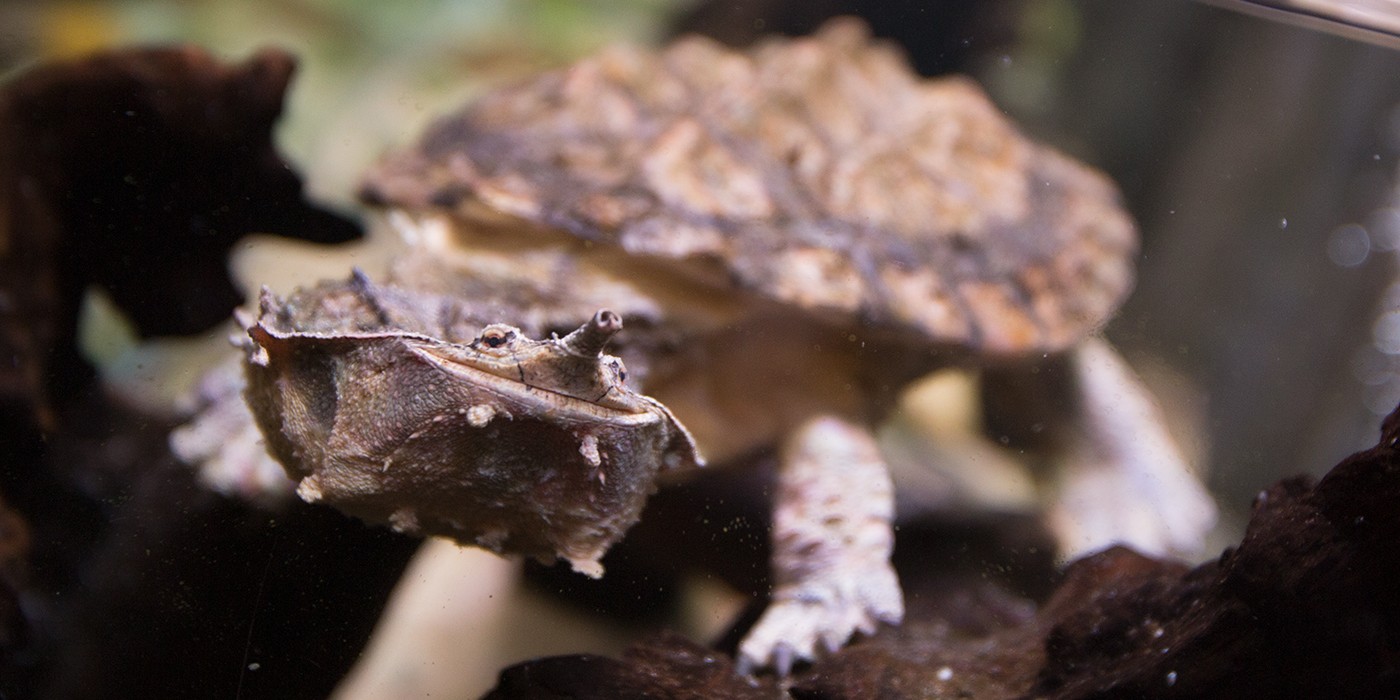Five fun turtle and tortoise facts from the Smithsonian’s National Zoo

Critically endangered, radiated tortoises sport star patterns on their shells and live in the forests and scrubland of Madagascar. (Images courtesy Smithsonian's National Zoo)
People often use the words turtle and tortoise interchangeably, but these reptiles have distinct differences:
Turtle shells are typically more flattened and not as deeply domed as tortoise shells but there are always exceptions to these rules.
In many turtle species, females are larger than males, while generally speaking, tortoise males are larger than females.

Most turtles are aquatic or semi-aquatic, while tortoises live on land. Tortoises, however, are often good swimmers.
Both turtles and tortoises are among the most popular animals at the Smithsonian’s National Zoological Park in Washington, D.C., where Assistant Curator Matt Evans in the Zoo’s Reptile Discovery Center says they are one of the most commonly requested animals on VIP tours.

The Zoo considers its enormous, 500-pound male Aldabra tortoises to be “ambassador animals.” “They’re one of those animals people just expect to see when they come here,” Evans says.
A six-year-old spider tortoise fits in the palm of a hand, while an alligator snapping turtle measures more than two feet long. Whatever their shape, size, and age, today is their day. Here are five fascinating facts about turtles and tortoises.

1. Tortoises can live more than 200 years
Aldabra tortoises take up to 40 years (average 25-30 years) to reach sexual maturity but will continue to grow throughout their lifetime. When Alex, one of the Zoo’s Aldabras, came to the Smithsonian in 1956, he was already an adult. That means that by now, he is probably at least 100.
Despite his age, Alex still shows signs of spunk. Several years ago, he shocked his keepers by climbing over a large rock wall that no one thought climbable by a 450-pound tortoise. It took a considerable group effort to heft him back where he was supposed to be!

2. Turtles are among the most endangered vertebrates.
Habitat destruction, illegal collection, water contamination, and massive harvesting of wild turtles are decimating the world’s turtle population. With only some 330 species of turtles and tortoises, many are on the endangered species list. To put this in perspective, there are an estimated 3,000 species of snakes and 7,000 species of lizards.
In parts of Asia, organs of certain turtle species are believed to have medicinal properties and are illegally harvested by the thousands. Some types of box turtles sell for almost $20,000 each in markets in Thailand. In 2017, the National Zoo successfully hatched a pair of Bourett’s box turtles, as part of an effort to ensure the species’ survival. Scientists estimate only 2,300 Bourett’s box turtles remain in their natural habitats in Vietnam and Laos.
3. Turtles shed their scutes.
Like snakes, turtles shed as they grow. Instead of skin, they shed scutes or the hard scales on their shells. New growth replaces the peeling scutes, as the turtles become older and bigger. On young turtles and tortoises, it is sometimes possible to count the rings on their scutes to estimate their approximate age.

4. Turtles “brumate” in winter.
Brumation is a hibernation-like state specific to cold-blooded animals. Like other reptiles, turtles are ectothermic, meaning their body temperature is regulated by their environment. River turtles sunning on rocks are quite literally soaking up the warmth of the sun.
During a fall or winter season, turtles and tortoises become still and slow as their bodies cool down. Some species, like Bourret’s box turtle, brumate from October through March, where they stop eating and just shut down completely, protecting themselves from cool outside temperatures.

5. Tortoises and turtles have good eyes.
Unlike other reptiles, turtles and tortoises have very good vision and are drawn to bright colors. They are quick to notice bright hues that resemble edible flowering blooms, like on the cacti that thrive in the desert environments some tortoises call home.

.
Whether it’s bright green kale, orange carrots, or pink tennis shoes, turtles and tortoises at the Zoo take notice. Zookeepers use bright colors to target-train the giant Aldabras. At 500 pounds and very powerful, it is best to positively motivate these tortoises to step on a scale or extend their necks and remain still so the veterinarians can get a routine blood sample.

Though the Aldabras respond well to training, sometimes the curators do have to step in and apply a little elbow grease to get the tortoises out of certain situations. For example, they like to burrow into holes in the ground, especially when it’s cold and wet. If a food bribe doesn’t work to get them out, keepers have to band together and heft a tortoise out of a hole it’s dug itself into.
